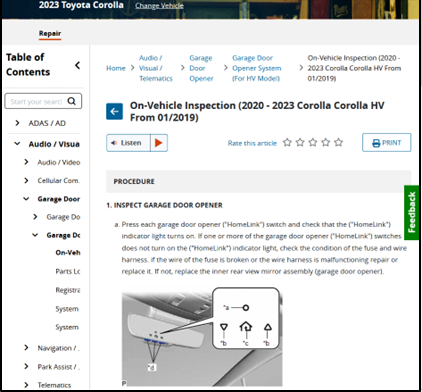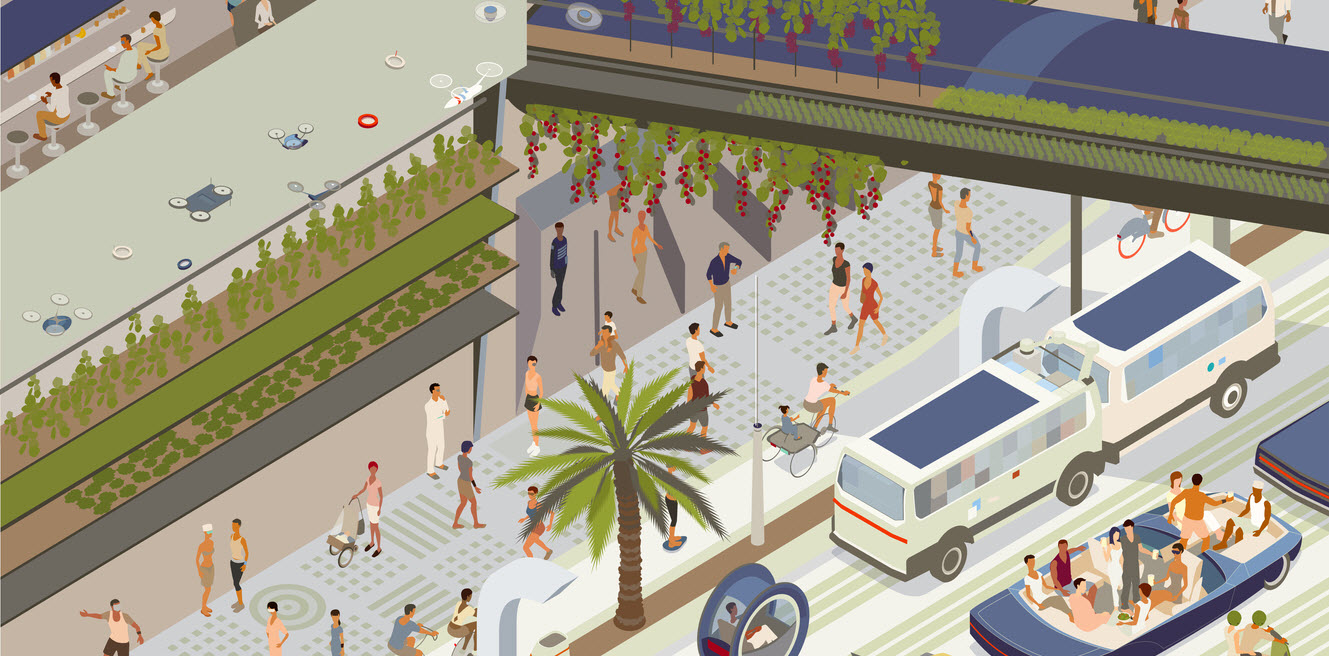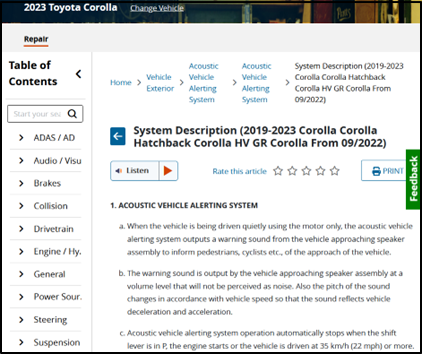| By ChiltonLibrary Staff |
When you’re talking about Toyota, superlatives come to mind: Toyota has the most vehicles on the road, and the Toyota Corolla is the bestselling car of all time. Toyotas have a reputation for reliability, a long life span, and a tendency to hold their value.
Toyota attributes much of its success to an emphasis on quality and safety, supported by diligent testing in different driving circumstances around the world. For example, Toyota adds additional strength to wheel construction for vehicles sold in parts of the world where overall road quality is poor. However, while solving problems in a lab provides insights and breakthroughs, engineers also benefit from testing innovations with and for users, such as in a living lab.
Building a living laboratory
Did you know that Toyota is allocating some of its famed engineering talent to creating a human-centered, fully connected prototype city?1 In 2020, Toyota broke ground on a 175-acre smart city at the foot of Mt. Fuji in Japan. They call it a “Woven City,” recalling Toyota’s origins as a loom company weaving cloth. Toyota intends the name Woven City to emphasize the interweaving of the threads of community and mobility. Its aim is a sustainable, people-centered community that optimizes the flow of people, goods, and information — aided by artificial intelligence (AI), robots, and other innovations.
The future of mobility
Similar to the University of Michigan’s Mcity proving ground, Woven City tests new mobility technology. One difference is that the Woven City community has human inhabitants. Initially, more than 300 inventors as well as families and seniors will live there. In addition, Toyota extends the term “mobility” beyond cars and trucks, defining it as the movement of people, goods, and information. Innovations include robots, wheelchairs, autonomous vehicles, and scooters to move people and goods, and information and automation technologies to move data.
The goal: Harmonious movement of people, goods, and information
Woven City is powered by solar energy, geothermal energy, and hydrogen fuel cell technology. Driverless shuttles, which Toyota calls “E-palettes,” transport people and also function as mobile shops or workspaces. Trucks travel underground, where robots manage deliveries. Sensors and cameras monitor vehicles, roads, buildings, and homes in order to make transport safer and daily life easier. Smart home AI assistants manage stocking refrigerators and trash pickups.
Micro mobility
An example of an innovation being tested and refined at Woven City is industrial designer Takamitsu Ikoma’s lightweight motorbike that folds up small enough to place under a desk. Ikoma previously designed transformable robots at a toy maker and says, “This motorbike brings back the joy of the ride.”2 The motorbike is an electric vehicle with a smart battery and can be used to supply power when needed. It can also be powered by affixing solar panels to the side.
Toyota innovations explained at ChiltonLibrary
While Woven City is a work in progress, we reap the knowledge gained from Toyota’s research as it applies to its cars and trucks. The newest Toyota car and truck updates from ChiltonLibrary include connected innovations that make daily life easier, such as the garage door opener system.

The ChiltonLibrary recent Toyota update explains each vehicle’s many features, such as its acoustic vehicle alerting system. As vehicles become quieter, a safety mechanism is needed to alert people that a vehicle is approaching. ChiltonLibrary also covers how to troubleshoot and repair the systems in detail.
ChiltonLibrary recently updated its Toyota and Lexus data to 2023 with factory information. Factory information is used by Toyota technicians. It’s highly sought after for its accuracy and completeness. To subscribe, contact your Gale representative or take ChiltonLibrary for a spin.
1. “Woven City image video,” Toyota Motor Corporation, January 6, 2020.
2. “Spreading the Joy of Mobility,” Woven City Press, February 2023 Edition.



